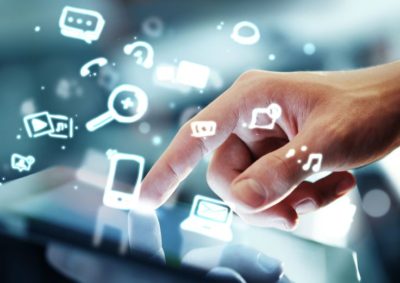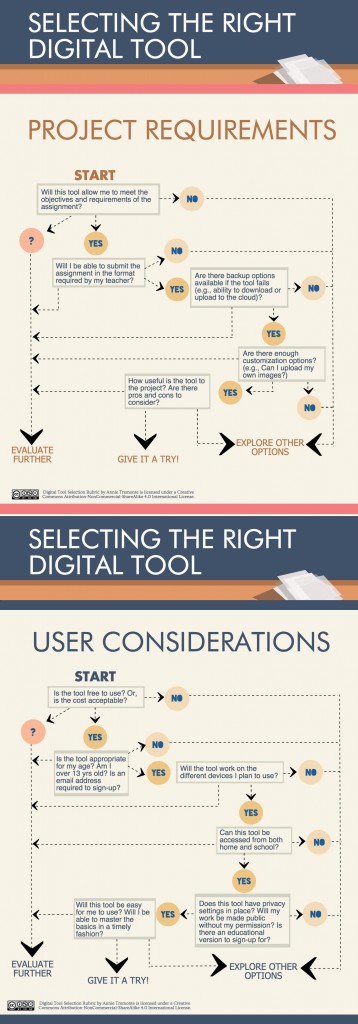
Mission Statement
To support a paradigm shift in teaching by working collaboratively with colleagues to develop authentic learning through integrating technology resources with student interest. Through implementing technology-rich interest-driven learning opportunities, growing students Digital Literacy competence. Concurrently advocating for building relationships with students while promoting moral and ethical results. In this approach, generate measurable student growth.
This mission statement is the first in what I hope to be a series of statements that show growth in both understanding and implementation of digital education. I would love to have feedback.
Learning Theory:
Students are entitled to an authentic learning experience, where the teacher encourages them to identify their own understanding of a concept or problem and “create” their own solutions. They are also learning through experience, “learning by doing”, in addition to connecting their learning to previous knowledge, they are developing a deeper understanding. (Vygotsky) As we Evaluate how his theory’s fit into digital education, more research needs to be done, one current research by Irina Verenikina, present at the World Conference on Educational Multimedia, Hypermedia and Telecommunications 2010, finds that “new technologies call for advanced pedagogies to ensure their effective use. The theory of Vygotsky, which has gained an increased popularity in the past three decades, provides a rich, comprehensive and well-established framework for an advanced pedagogy of this kind. A number of prominent leading theoretical perspectives which stemmed from the theory of Vygotsky provide a wealth of ideas and approaches to support and substantiate such pedagogy.”
Building Relationships:
As educators, we desire our students to show growth in our content areas, however, we also have a direct effect on a student’s growth as a person, their self-esteem, which can support or hinder them. It’s about teaching students how to learn. A positive, welcoming environment is essential and increases the students’ desire to be there. Teaching is also around creating those relationships, therefore learning can begin. (Reasoner)
Moral Development:
High School is one of the last steps before adulthood, as well as one of the last “safe places” for young adults to learn the lessons they need to navigate the consequences of their choices. Many students need these lessons to facilitate understanding their roles and responsibilities in the community. Moral development is a function that provides, even if it is in the simplest form of reinforcing norms. I am inclined to see school as an integral element of moral development. Lawrence Kohlberg, a psychologist who extended Piaget’s theories, explains the actions and responses in his stages of moral development. Cognitive development is fundamental to his three levels of morality, where he used situations that required moral reasoning to evaluate how one response to what is right, especially when it was not evident what to do. (Kohlberg)
When cognitive development is involved, it is impossible to point to certain ages where one is guaranteed to be when evaluating the level of maturity and responsibility. Of Kohlberg’s levels of pre-conventional, conventional and post-conventional morality, high schools fall mainly in the third area of conventional morality. This is where our students start to integrate the rules of society into their understanding of what is good or bad, idealized on what is social responsibility, leadership, and citizenship. (Kohlberg)
Digital Literacy:
While digital literacy (the process of teaching and learning in regards to technology and the uses of technology) and responsibility can be addressed with many different activities it unfortunately, is not at the forefront of technology implementation. An emphasis has been put on integrating our technology into the curriculum, although little or no instruction on teaching standards of conduct nor safety precautions. As pointed out in Digital Citizenship: Addressing Appropriate Technology Behavior, “Technology-infused teaching is becoming more commonplace every year. Technology in the classroom is becoming as transparent as the chalkboard and pencil… technology-infused teaching does not always include teaching about appropriate and inappropriate uses of technology” (Ribble, Bailey, & Ross).
According to Briggs and Makice, literacy means the student understands what tools to use and how to use them, while fluency means the student also recognize when and why you use those (2011)
Digital Fluency:
An evolving attitude that empowers the individual to effectively and ethically interpret information, discover meaning, design content, construct knowledge and communicate ideas in a digitally connected world. We believe this attitude thrives when inquiry, play, along with exploration remain valued and encouraged as meaningful learning experiences
In the article on Digital Fluency where Briggs & Makice (2011) wrote “…the development and maintenance of digital abilities requires practice. The first-hand experience is critical to learning, the process to become fluent demands an investment of time and patience…” reminded me this is not just applicable to the students, nonetheless even more important for the educator who is trying to use the technology to meet an educational outcome.
Paradigm Shift:
Educational technology must replace its focus from the technologies and content, to connected learning. By creating a learning environment, in which the student connects what they are interested in to what they are learning, learning increases. Using technology as the tool that connects the standards to the content can increase learning. (“Digital education 2.0: From content to connections”)
As the needs for students increase and our profession must transform to address those needs through the use of technology. Teachers must become involved with an active community of learners and be responsible for our own professional growth. Leadership is needed to create and implement these tools and this class has prepared us for that.
Digital Tool Selection Rubric by Annie Tremonte is licensed under a Creative Commons Attribution-NonCommercial-ShareAlike 4.0 International License.
Banerjee, P., & Bolson, G. (2015, January 26). Digital education 2.0: From content to connections. Retrieved November 28, 2015, from http://dupress.com/articles/future-digital-education-technology/
Briggs, C., & Makice, K. (2012). Digital fluency: Building success in the digital age. Bloomington, Ind.: SociaLens.
Kohlberg, L. (1981). The philosophy of moral development: Moral stages and the idea of justice. San Francisco: Harper & Row.
Reasoner, R. (2010). NASE – National Association for Self Esteem: What is Self-Esteem? Retrieved November 28, 2015 from http://www.self-esteem-nase.org/what.php
Ribble, M., Bailey, G., & Ross, T. (2004). Digital Citizenship: Addressing Appropriate Technology Behavior. Learning & Leading with Technology, 32(1), 6-12.
Verenikina, I. (2010). Vygotsky in twenty-first-century research. World Conference on Educational Multimedia, Hypermedia and Telecommunications 2010. Retrieved December 11, 2015 from http://ro.uow.edu.au/cgi/viewcontent.cgi?article=2337&context=edupapers
Vygotsky, L.S. (1978). Mind in Society: The Development of Higher Psychological Processes. Cambridge, Massachusetts: Harvard University Press
